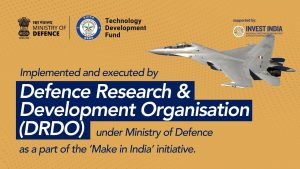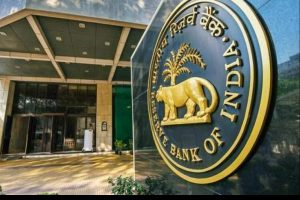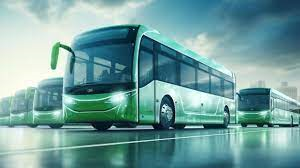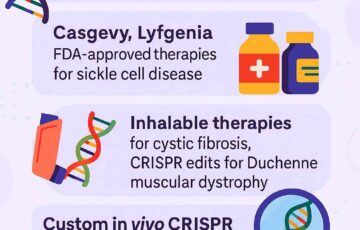Daily News Analysis.
Technology Development Fund (TDF) Scheme (GS-3)
News: Earlier this year, the Technology Development Fund (TDF) Scheme helped 20 startups and 41 MSMEs, according to the Minister of State for Defence.
As part of the “Make in India” strategy, the Technology Development Fund (TDF) Scheme was formed to encourage defense technology independence.
It is a MoD (Ministry of Defence) programme that is carried out by the Defence Research and Development Organisation (DRDO) in order to satisfy the needs of the Tri-Services, Defence Production, and DRDO.
The program promotes public and private sector participation, particularly MSMEs, to build an ecosystem for strengthening cutting-edge technological capabilities for defense applications.
It encourages MSMEs and start-ups to develop parts, goods, systems, and technology locally.
Eligibility:
- According to the applicable Indian regulations, public limited companies, private limited companies, partnership firms, limited liability partnerships, one-person companies, and sole proprietorships must be registered. Indian citizens are required to own and run the business. Industries with 49% or less foreign investment.
- Finance Support: Grants will be given to the industry in order to raise money. Up to INR 10 Cr of the project’s cost may be funded, however no more than 90% of the entire project cost may be funded. Industry and academia or research institutes may collaborate. 40% of the project’s budget cannot be spent on academic work involvement. The funding will be based on jointly agreed-upon benchmarks.
About Defense Research and Development Organization (DRDO)
With a mission to achieve self-reliance in critical defense technologies and systems and a vision to empower India with cutting-edge defense technologies, DRDO is the Ministry of Defense’s research and development arm.
It also provides our armed forces with cutting-edge weaponry and equipment in accordance with the demands set forth by the three Services. The Agni and Prithvi series of missiles, Tejas light combat aircraft, Pinaka multi-barrel rocket launcher, Akash air defence system, a wide range of radars and electronic warfare systems, etc.
Are just a few examples of the strategic systems and platforms that the DRDO has successfully developed and produced on its own, boosting India’s military might and giving it crucial leverage.
Centralized Public Grievance Redressal And Monitoring System (GS-3)
News: The 12th monthly report for States for the Centralized Public Grievance Redressal and Monitoring System (CPGRAMS) for July 2023 was made public by the Department of Administrative Reforms and Public Grievances (DARPG).
- Bhashini, an AI-based language tool, has been integrated by DARPG with the CPGRAMS portal. The translation of regional language grievance papers into English by the Grievance Redressal Officers (GROs) would be made easier by this integration.
- A better understanding and communication between the citizen and the relevant authorities will be achieved by giving the complainants the option of viewing the final response in both English and the translated native tongue.
- The Centralized Public Grievance Redress and Monitoring System (CPGRAMS) is an online forum where residents can file complaints with the government on any issue relating to the provision of services, and it is accessible to them around-the-clock.
- It connects to all of the Ministries/Departments of the Government of India and the States through a single platform. Role-based access to this system is available to all Ministries and States.
- The public can also access CPGRAMS through a mobile application that is integrated with UMANG or a separate app that can be downloaded from the Google Play store.
- With the special registration ID issued at the time of the complainant’s registration, the status of the grievance submitted through CPGRAMS can be followed. If the residents are not pleased with the Grievance Officer’s decision, CPGRAMS also offers an appeals facility.
Decisions Of Monetary Policy Committee (GS-3)
News: The Reserve Bank of India’s Monetary Policy Committee (MPC) recently decided to keep the policy repo rate at 6.5% while also updating its forecast for retail inflation for the current fiscal year (2023–2024).
- Additionally, to absorb surplus liquidity, banks are subject to a temporary 10% Incremental Cash Reserve Ratio (I-CRR).
- Repo Rate Unchanged: In order to balance economic growth and inflation management, the RBI unanimously agreed to maintain the policy repo rate at 6.5%.
- Retail inflation is now expected to reach 5.4% in the current fiscal year, up 30 basis points from the previous forecast.
- This adjustment takes into account the rising trend in overall inflation, which is largely due to increased vegetable costs.
- Although it is anticipated that the increase in vegetable costs would only last a short while, external variables like impending El Nino weather and rising food prices could still be dangerous.
- Real GDP Growth Projected: The MPC kept its 6.5% real GDP growth forecast for 2023–2024.
- Scheduled banks must maintain an incremental cash reserve ratio (I-CRR) of 10% on the net growth in their demand and time obligations between May 19, 2023, and July 28, 2023, as of the 12th of August 2023.
- The goal of this action is to eliminate excess liquidity, especially in light of the recent demonetization of Rs. 2000 notes.
- In order to avoid penalizing banks for their current deposits and to minimize effects on loan growth and the economy, the RBI chose I-CRR over a general CRR hike.
- Increased borrowing costs and loan funds would have resulted from an increase in CRR. I-CRR does not interfere with normal banking activities; it exclusively targets surplus money from demonetization.
- The current CRR stays at 4.5 percent.
Monetary Policy Committee (MPC):
- The Central Government established the Monetary Policy Committee (MPC), which is chaired by the Governor of the Reserve Bank of India. In order to keep inflation within a specific target level, the Monetary Policy Committee was established with the task of setting the benchmark policy interest rate (repo rate).
- The technical advisory group and the internal team support and advise the RBI governor as she makes choices about monetary policy. Prior to the formation of the committee, the Governor of the RBI acted alone in making the majority of the key decisions relating to interest rates.
- MPC was established in accordance with the Reserve Bank of India Act, 1934, in an effort to increase accountability and transparency when determining India’s monetary policy. The MPC meets at least four times a year, and after each meeting, the monetary policy is published with each member’s comments.
PM-eBus Sewa Scheme (GS-2)
News: The ‘PM-eBus Sewa’ initiative to improve city bus operations was just authorized by the union cabinet.
- The PM-eBus Sewa Scheme will see the deployment of 10,000 e-buses throughout the nation’s cities. City bus operations will follow this plan’s Public Private Partnership (PPP) approach.
- For ten years, this plan will fund bus operations. States and cities are in charge of managing the bus services and paying the bus operators.
- To the degree outlined in the proposed system, the Central Government will subsidize these bus operations. A total of Rs 57,613 crore in funds has been allotted to it.
- The central government would contribute Rs 20,000 crore towards this financial provision, with the state governments covering the balance. The program would cover cities with a population of at least 3 lakh people, with priority given to those without organized bus services.
- The plan is divided into two parts: measures for green urban mobility and enhancing city bus services.
E-Amrit Portal
- E-Amrit serves as a one-stop shop for all information about electric vehicles, dispelling myths about their uptake, purchases, investment opportunities, regulations, subsidies, and other topics.
- As part of a joint information exchange program with the UK government, NITI Aayog created and hosts the portal.
Characteristics of the portal
- It aims to support government campaigns to increase public awareness of EVs.
- It tries to educate people about the advantages of converting to electric cars.
Need for E-Amrit
- India has recently launched a number of initiatives to hasten the country’s adoption of electric mobility and the decarbonization of transportation.
- Particularly crucial in building an ecosystem for the early adoption of EVs are program like FAME and PLI.
Global Summit On Traditional Medicine (GS-3)
News: The Ministry of Ayush and the World Health Organisation (WHO) are working together to host a special international summit on traditional medicine.
- Experts, practitioners, and dignitaries will come together at this historic event to discuss the most recent developments in science and evidence-based knowledge in the area of conventional medicine.
- This summit demonstrates the progress India has made in fusing conventional practices with cutting-edge methods, ultimately illuminating a route towards obtaining universal access to traditional treatment.
- An exhibition showing conventional medical practices from all across the world, including participation from the Ministry of Ayush, will also be part of the summit.
- The Ministry of Ayush and different WHO regional centers are leading this expo, which will highlight the connection between traditional medicine and the environment and showcase scientific and technical achievements.
- The summit represents an important development in the field of traditional medicine, particularly in light of the formation in 2022 with Indian government assistance of the WHO Global Centre for Traditional Medicine.
- This cooperative project will be crucial in influencing international health regulations concerning traditional medicine research, usage, and public health.
World Health Organization (WHO)
- In 1948, the World Health Organization (WHO), a division of the UN dedicated to health, was established. Its corporate headquarters are in Geneva, Switzerland. There are six regional offices, 150 country offices, and 194 Member States. It collaborates with its member states through the Ministries of Health, which are an intergovernmental organization.
- The WHO takes the lead in matters of global health, directing the direction of health research, establishing norms and standards, outlining evidence-based policy alternatives, offering technical assistance to developing nations, and observing and analyzing health trends. It started operating on April 7, 1948, which is now recognized as World Health Day each year.









